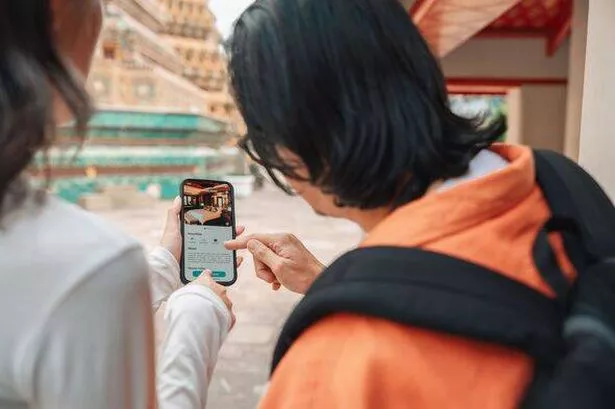Ahead of winter holidays and festive trips away, a flight attendant has now shared a clever travel hack to get an extra bag on board without paying a penny more
Whether it’s a summer holiday or a winter trip away, one thing is always certain and that’s packing with luggage allowance is tricky to get right. Pack too much and you run the risk of having a bag that’s too heavy or won’t fit the cabin luggage standards, but if you pack too light then you run the risk of being forced to wash your clothes whilst away.
Yet it doesn’t have to be so hard, as a flight attendant has now shared a clever travel hack to get an extra bag on board without paying a penny more.
Flight attendant Miguel Muñoz shared a sneaky trick to help passengers dodge extra luggage fees by utilising a duty-free shopping bag, and it’s the perfect trip for your Christmas getaway.
READ MORE: I’m a flight attendant – I’ve been on a plane when it got struck by lightningREAD MORE: I’m ex cabin crew – there’s one drink you should never have on a plane
Miguel’s genius idea reurposes a duty-free bag to carry clothes and other items that won’t fit in your hand luggage, you can essentially sneak an extra bag on board.
According to Miguel, “duty-free bags don’t count as carry-on baggage,” so gate agents tend to turn a blind eye.
To take advantage of this hack, holidaymakers can either bring a duty-free bag from home or purchase one at the airport’s duty-free shop.
Miguel said: “If you have something that doesn’t fit in your suitcase or you want to bring an extra bag on board, here’s the trick.
“All you have to do is carry a duty-free bag. Or ask for one at the duty-free shop and you place whatever you want in the shopping bag. There is obviously limited space, but at least you are bringing an extra bag on the plane with you.”
He added: “Now you know. If you ever find yourself in that situation, just put whatever you want in a duty-free bag. You are welcome!”
Miguel’s trick comes after another hack has gone viral, using a “fake pillow” where passengers use a pillowcase filled with extra items, as the pillow doesn’t typically count as a piece of luggage.
This hack has been shared by hundreds of travellers on social media, who claim that security officers and gate agents rarely bat an eye.
TikTok has also been filled with tips and tricks from savvy travellers all keen to carry more, without the hefty fees for extra baggage. A savvy traveller from Handluggageonly explained on the platform, “Pack all the clothes you need in your backpack but if that person checking you in for your flight turns around and says anything about your bag being overweight and tries to charge you the excess baggage fare, simply pop over to the bathroom and wear as many clothes as possible.
“Technically, no one can say anything about the fact that you just wore your extra clothes on you instead of having them in your luggage and more importantly – they can’t charge you the extra fare as your bag weight should be much more in line.”



